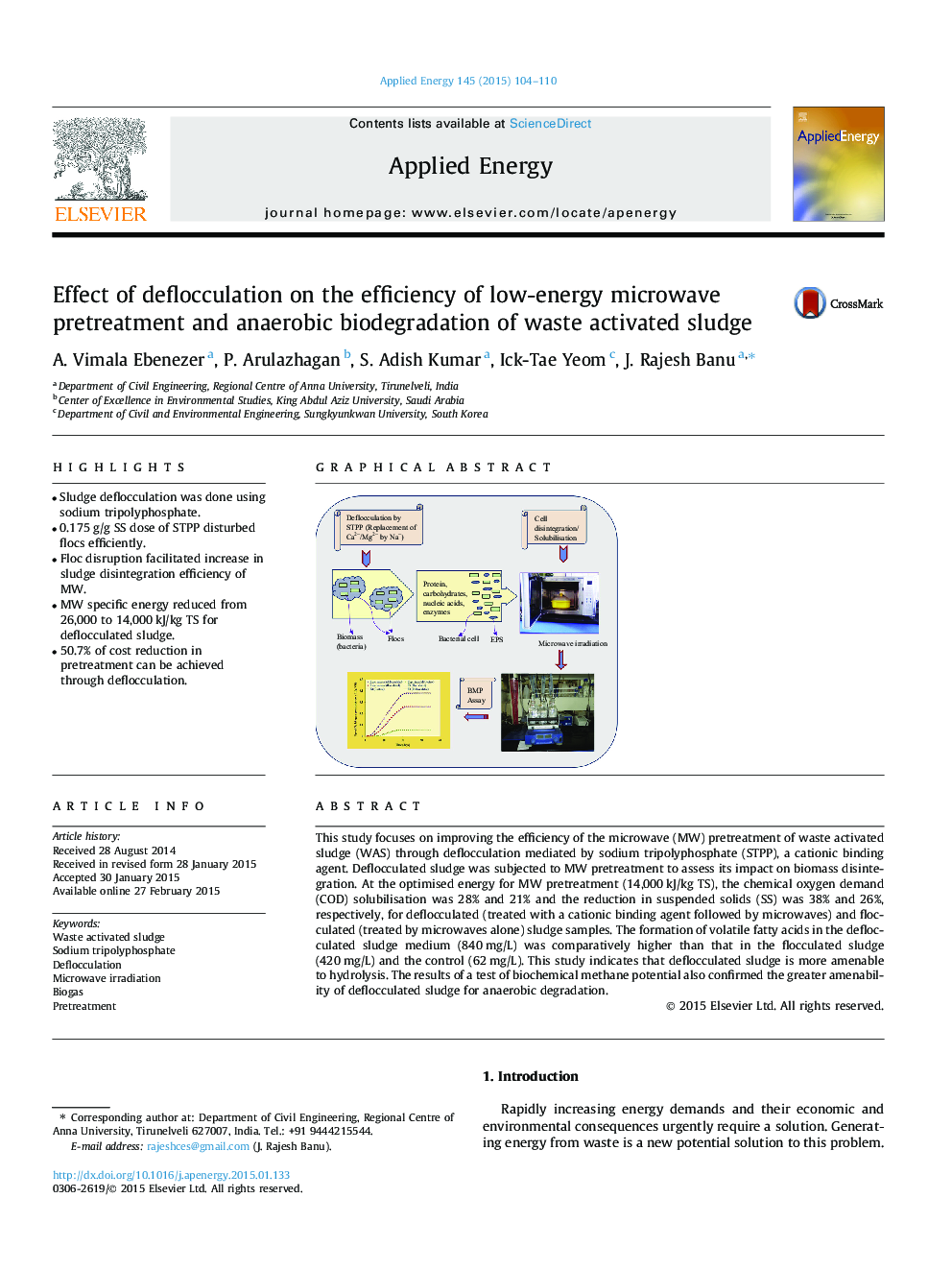| Article ID | Journal | Published Year | Pages | File Type |
|---|---|---|---|---|
| 242541 | Applied Energy | 2015 | 7 Pages |
•Sludge deflocculation was done using sodium tripolyphosphate.•0.175 g/g SS dose of STPP disturbed flocs efficiently.•Floc disruption facilitated increase in sludge disintegration efficiency of MW.•MW specific energy reduced from 26,000 to 14,000 kJ/kg TS for deflocculated sludge.•50.7% of cost reduction in pretreatment can be achieved through deflocculation.
This study focuses on improving the efficiency of the microwave (MW) pretreatment of waste activated sludge (WAS) through deflocculation mediated by sodium tripolyphosphate (STPP), a cationic binding agent. Deflocculated sludge was subjected to MW pretreatment to assess its impact on biomass disintegration. At the optimised energy for MW pretreatment (14,000 kJ/kg TS), the chemical oxygen demand (COD) solubilisation was 28% and 21% and the reduction in suspended solids (SS) was 38% and 26%, respectively, for deflocculated (treated with a cationic binding agent followed by microwaves) and flocculated (treated by microwaves alone) sludge samples. The formation of volatile fatty acids in the deflocculated sludge medium (840 mg/L) was comparatively higher than that in the flocculated sludge (420 mg/L) and the control (62 mg/L). This study indicates that deflocculated sludge is more amenable to hydrolysis. The results of a test of biochemical methane potential also confirmed the greater amenability of deflocculated sludge for anaerobic degradation.
Graphical abstractFigure optionsDownload full-size imageDownload as PowerPoint slide
